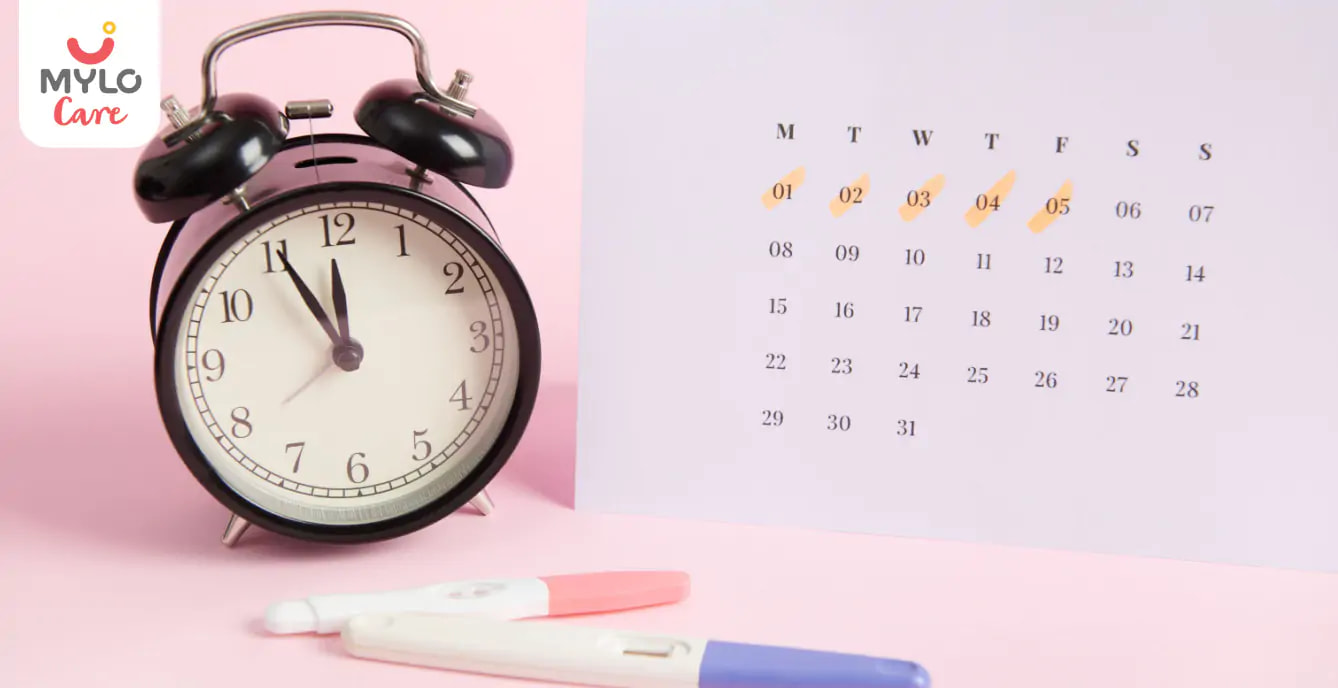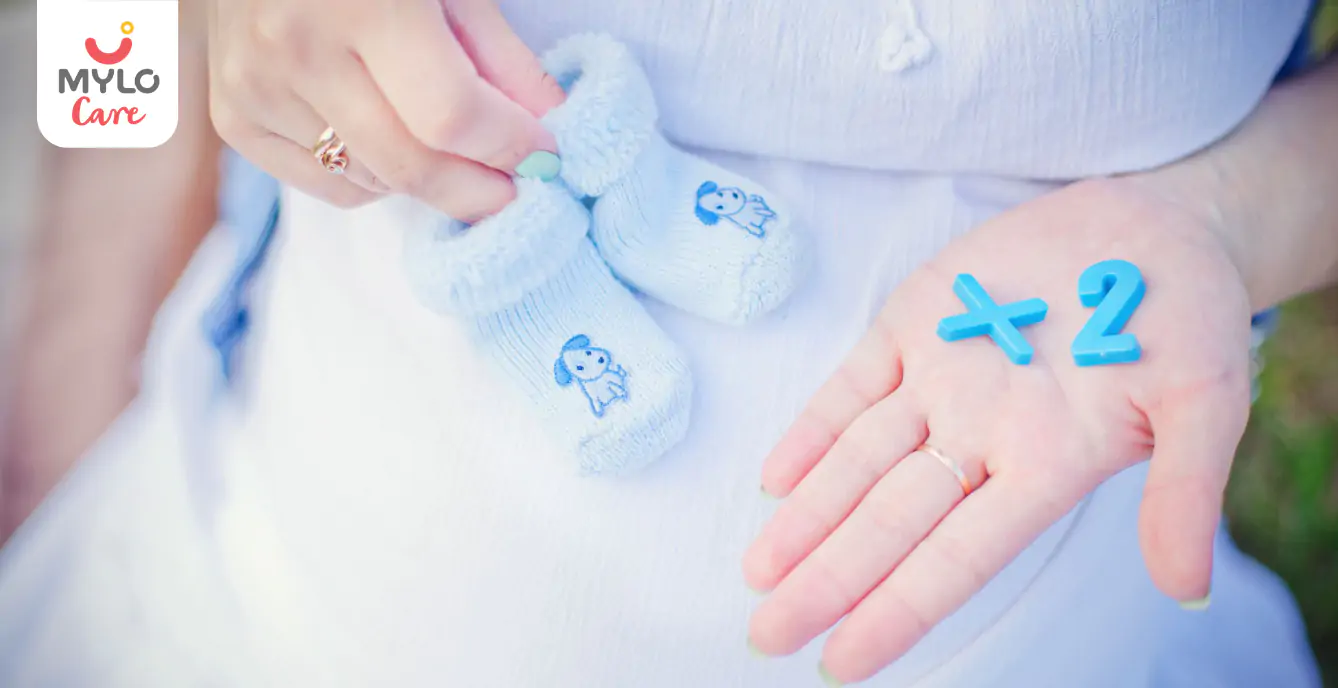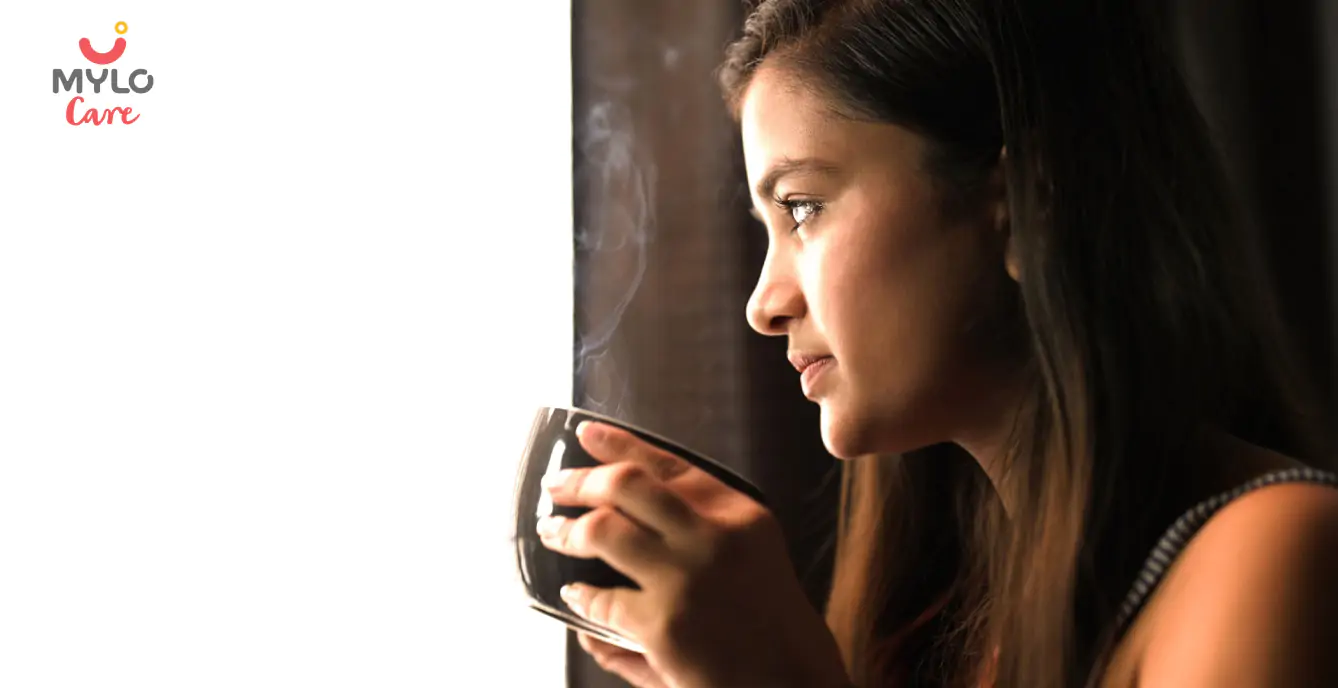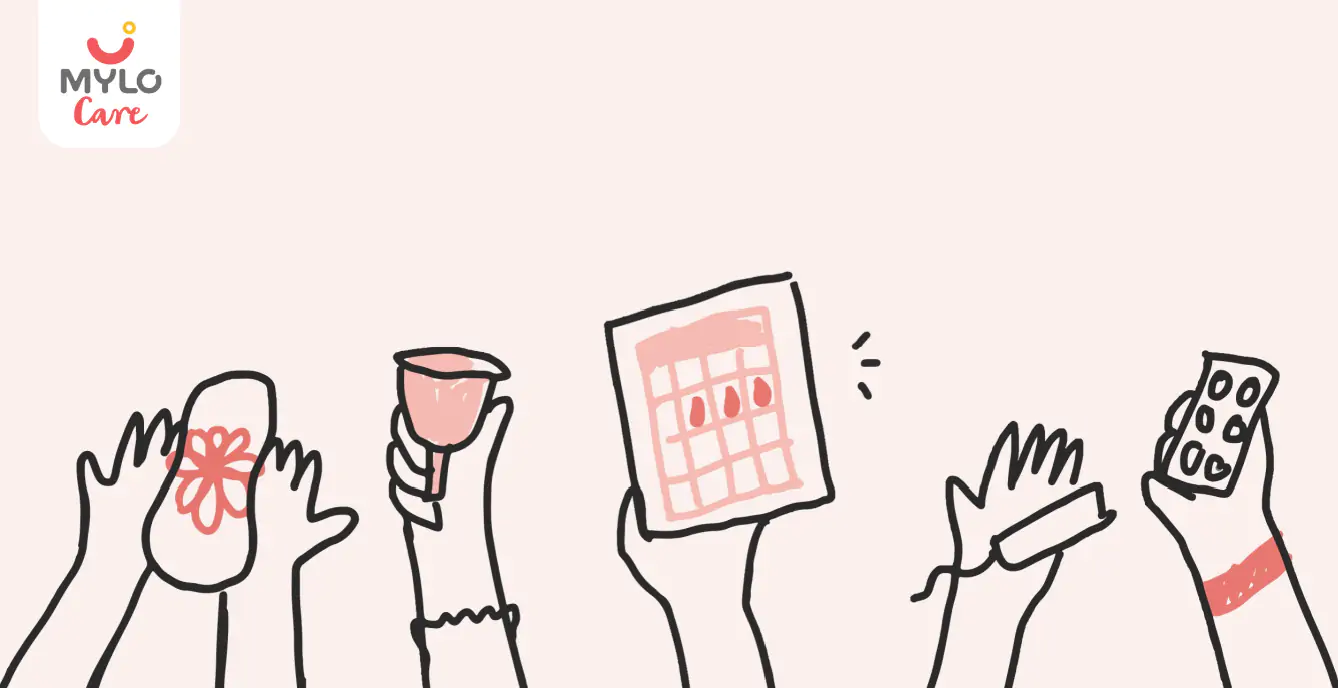Home

Ovulation Kit 101: A Beginner's Guide to Tracking Fertility & Maximizing Your Chances of Conception
In this Article

Pregnancy
Ovulation Kit 101: A Beginner's Guide to Tracking Fertility & Maximizing Your Chances of Conception
Updated on 23 February 2024



Medically Reviewed by
Dr. Shruti Tanwar
C-section & gynae problems - MBBS| MS (OBS & Gynae)
View Profile

As a couple, planning to have a baby can be an exciting and overwhelming experience. Many factors can influence the success of conception, and one of the most crucial ones is ovulation. To maximize your chances of conception, it’s important to determine when you’re ovulating, and an ovulation kit can help you do just that.
In this article, we will provide a comprehensive beginner's guide on how to use ovulation kit, factors that affect ovulation test results, how ovulation kit works and tips to maximize conception.
What Does Ovulation Mean?
Ovulation is a critical part of a woman's menstrual cycle. It is the process in which a mature egg is released from the ovary and travels down the fallopian tube, where it can be fertilized by sperm. Ovulation usually occurs once a month, and it is the most fertile time for a woman to conceive a baby.
The menstrual cycle is divided into three phases: the follicular phase, ovulation, and the luteal phase. The follicular phase starts on the first day of menstruation and ends when ovulation occurs. During this phase, the body prepares to release an egg by thickening the uterine lining and producing follicle-stimulating hormone (FSH), which stimulates the ovaries to produce estrogen. As estrogen levels rise, it triggers the release of luteinizing hormone (LH), which signals the ovary to release the mature egg.
What is the Importance of Tracking Ovulation?
Tracking ovulation is essential for couples planning to have a baby. By determining when ovulation occurs, couples can time intercourse for the most fertile days, maximizing their chances of conception. Studies have shown that timing intercourse to coincide with ovulation can increase the chances of conception by up to 30%.
Tracking ovulation can also help identify potential fertility issues. If a woman is not ovulating regularly, it may indicate a problem with her reproductive system. Identifying these issues early can help couples seek medical intervention if necessary.
What is an Ovulation Test Kit?
An ovulation kit is a tool used to predict when ovulation will occur. It works by detecting the presence of luteinizing hormone (LH) in the urine. LH is the hormone that triggers ovulation, and its levels surge 12-36 hours before ovulation occurs. By tracking the LH surge, an ovulation testing kit can predict when ovulation will occur, making it easier to plan intercourse for the most fertile days.
Ovulation test kits come in two forms: test strips and digital tests. Test strips are small, thin strips that are dipped into a urine sample, while digital tests are used like a pregnancy test, with a urine sample applied to a test stick. Both types of tests are easy to use and can provide accurate results when used correctly.
How to Use Ovulation Kit: Step-by-Step Guide
Using an ovulation kit is easy and straightforward. Here is a step-by-step guide on ovulation kit use:
1. Determine when to start testing
The best time to start testing depends on the length of your menstrual cycle. If you have a regular 28-day cycle, you should start testing on day 11 of your cycle (the first day of your period is day 1). If you have a longer or shorter cycle, adjust the testing start date accordingly.
2. Collect a urine sample
Collect a urine sample in a clean, dry container. It is best to use the first morning urine, as it contains the highest concentration of LH.
3. Follow the kit instructions
Depending on the type of kit you are using, you will either dip the test strip into the urine sample or apply the urine to the test stick. Follow the kit instructions carefully, ensuring that you use the correct amount of urine and that you read the results within the timeframe specified.
4. Interpret the results
Ovulation test kits use different methods to indicate a positive result. Some tests use a line system, where a dark line indicates a positive result, while others use a smiley face or a flashing smiley face. Regardless of the method used, a positive result means that ovulation is likely to occur within the next 12-36 hours.
5. Repeat testing
Depending on the length of your cycle, you may need to test for several days to ensure that you catch the LH surge. Continue testing until you get a positive result, or until your menstrual cycle starts.
It is best to test once a day at the same time each day, using first morning urine. If you miss a day of testing, resume testing as soon as possible.
You may also like: Is Lower-Abdomen Pain During Mid Cycle a Sign of Ovulation?
How Ovulation Kit Works?
Ovulation kits work by detecting the presence of luteinizing hormone (LH) in the urine. LH is a hormone produced by the pituitary gland that triggers ovulation. The levels of LH in the body surge 12-36 hours before ovulation occurs, making it an accurate predictor of when ovulation will happen.
Ovulation test kits use a monoclonal antibody that is specific to LH. When LH is present in the urine, it binds to the antibody, producing a positive result. The intensity of the line or the smiley face indicates the amount of LH in the urine, with a darker line or a solid smiley face indicating a higher level of LH.
Factors That Can Affect Ovulation Test Results
Several factors can affect ovulation test results, including:
1. Irregular menstrual cycles
Women with irregular menstrual cycles may have difficulty determining when to start testing, as ovulation may occur at different times each month.
2. Medications
Certain medications, such as fertility drugs, can affect LH levels, leading to inaccurate results.
3. Medical conditions
Medical conditions, such as polycystic ovary syndrome (PCOS), can affect LH levels, leading to false positives or false negatives.
4. Dehydration
Dehydration can affect the concentration of LH in the urine, leading to inaccurate results.
5. User error
Using the test incorrectly, misreading the results, or testing at the wrong time can lead to inaccurate results.
You may also like: Ovulation Disorders and Their Medications
Tips for Ovulation Kit Use
Here are some tips to help maximize your chances of conception using an ovulation kit:
- The earlier you start testing, the better your chances of catching the LH surge.
- Testing at the same time every day ensures that you get consistent results.
- First morning urine contains the highest concentration of LH, making it the best time to test.
- Drinking too much fluid before testing can dilute the urine, making it harder to detect the LH surge.
- Sperm can survive in the female reproductive tract for up to 72 hours, so having intercourse on the day of the LH surge and the following day maximizes your chances of conception.
What to Do After Getting a Positive Ovulation Test Result?
After getting a positive ovulation test result, it is time to have intercourse. The best time to have intercourse is on the day of the LH surge and the following day. Sperm can survive in the female reproductive tract for up to 72 hours, so having intercourse on these days maximizes your chances of conception.
You may also like: After Sex How Many Days to Get Pregnant: Your Timeline to Conception
FAQs
1. Can ovulation kit detect pregnancy?
No, ovulation kits cannot detect pregnancy. Ovulation kits detect the presence of luteinizing hormone (LH) in the urine, which surges before ovulation occurs.
2. How to check ovulation at home without a kit?
There are several ways to check for ovulation at home without a kit, including tracking basal body temperature, examining your cervical mucus and using ovulation calculator.
Key Takeaways
An ovulation kit is a valuable tool for couples planning to have a baby. By tracking ovulation, couples can time intercourse for the most fertile days, maximizing their chances of conception. To use an ovulation kit effectively, start testing early, use first morning urine, and test at the same time every day. Remember to have intercourse on the day of the LH surge and the following day to increase your chances of conception.
References
1. Su HW, Yi YC, Wei TY, Chang TC, Cheng CM. (2017). Detection of ovulation, a review of currently available methods. Bioeng Transl Med.
2. Yeh PT, Kennedy CE, Van der Poel S, et al. (2019). Should home-based ovulation predictor kits be offered as an additional approach for fertility management for women and couples desiring pregnancy? A systematic review and meta-analysis. BMJ Glob Health.
Tags
Ovulation Kit 101: Guide to Tracking Fertility in Hindi, Ovulation Kit 101: Guide to Tracking Fertility in Tamil, Ovulation Kit 101: Guide to Tracking Fertility in Telugu





Medically Reviewed by
Dr. Shruti Tanwar
C-section & gynae problems - MBBS| MS (OBS & Gynae)
View Profile


Written by
Anupama Chadha
Anupama Chadha, born and raised in Delhi is a content writer who has written extensively for industries such as HR, Healthcare, Finance, Retail and Tech.
Read MoreGet baby's diet chart, and growth tips

Related Articles
RECENTLY PUBLISHED ARTICLES
our most recent articles

Abortion
Is Breast Pain after Abortion Normal? What You Need to Know

Twins & Triplets
Twin Pregnancy: Signs, Types & Risks

Women Specific Issues
Chasteberry Benefits: The Natural Remedy You Need for Infertility, Hormonal Imbalance, and PMS

Baby Shower
The Ultimate Guide to Planning the Perfect Baby Shower

Announcements & Celebrations
50+ New Born Baby Wishes to Congratulate New Parents

Menstrual Cycle
First Period After C Section: How Long Does It Last
- Introducing Solid Foods to your 6-month-old Baby? Here is a complete Food Chart along with some Nutritious Recipes
- What to expect about the height/length of 6 months old?
- The Development of Your Kid at the Age of Four Months
- Burping Your Baby
- What Is the Significance of Motor Skills in Children & How to Develop Them?
- The Ultimate Guide to Formula Milk: Everything You Need to Know
- Are baby monitors safe or dangerous for your little ones? How to protect your baby from EMF Radiations?
- Here’s a List of a Lot of Things That You Need to Know When Your Baby Starts Rolling Over
- How to Travel Around the World Stress-Free With Your Baby?
- গর্ভবতী হওয়ার জন্য প্রধান 10টি যৌন অবস্থান: গর্ভধারণের চেষ্টাকারী দম্পতিদের জন্য আলোচনা | Top 10 Sex Positions to Get Pregnant: The Ultimate Guide for Couples Trying to Conceive in Bengali
- Welcoming New Born Baby Quotes to Celebrate Life's Greatest Gift
- It's a Baby Girl! 50+ Ideas for Announcing Your Daughter's Birth
- Never Miss These Crucial Warning Signs of Emotional Development Problems in Your Baby
- The Ultimate Guide to Using Almond Oil for Baby Massage


AWARDS AND RECOGNITION

Mylo wins Forbes D2C Disruptor award

Mylo wins The Economic Times Promising Brands 2022
AS SEEN IN
















- Mylo Care: Effective and science-backed personal care and wellness solutions for a joyful you.
- Mylo Baby: Science-backed, gentle and effective personal care & hygiene range for your little one.
- Mylo Community: Trusted and empathetic community of 10mn+ parents and experts.
Product Categories
baby carrier | baby soap | baby wipes | stretch marks cream | baby cream | baby shampoo | baby massage oil | baby hair oil | stretch marks oil | baby body wash | baby powder | baby lotion | diaper rash cream | newborn diapers | teether | baby kajal | baby diapers | cloth diapers |








